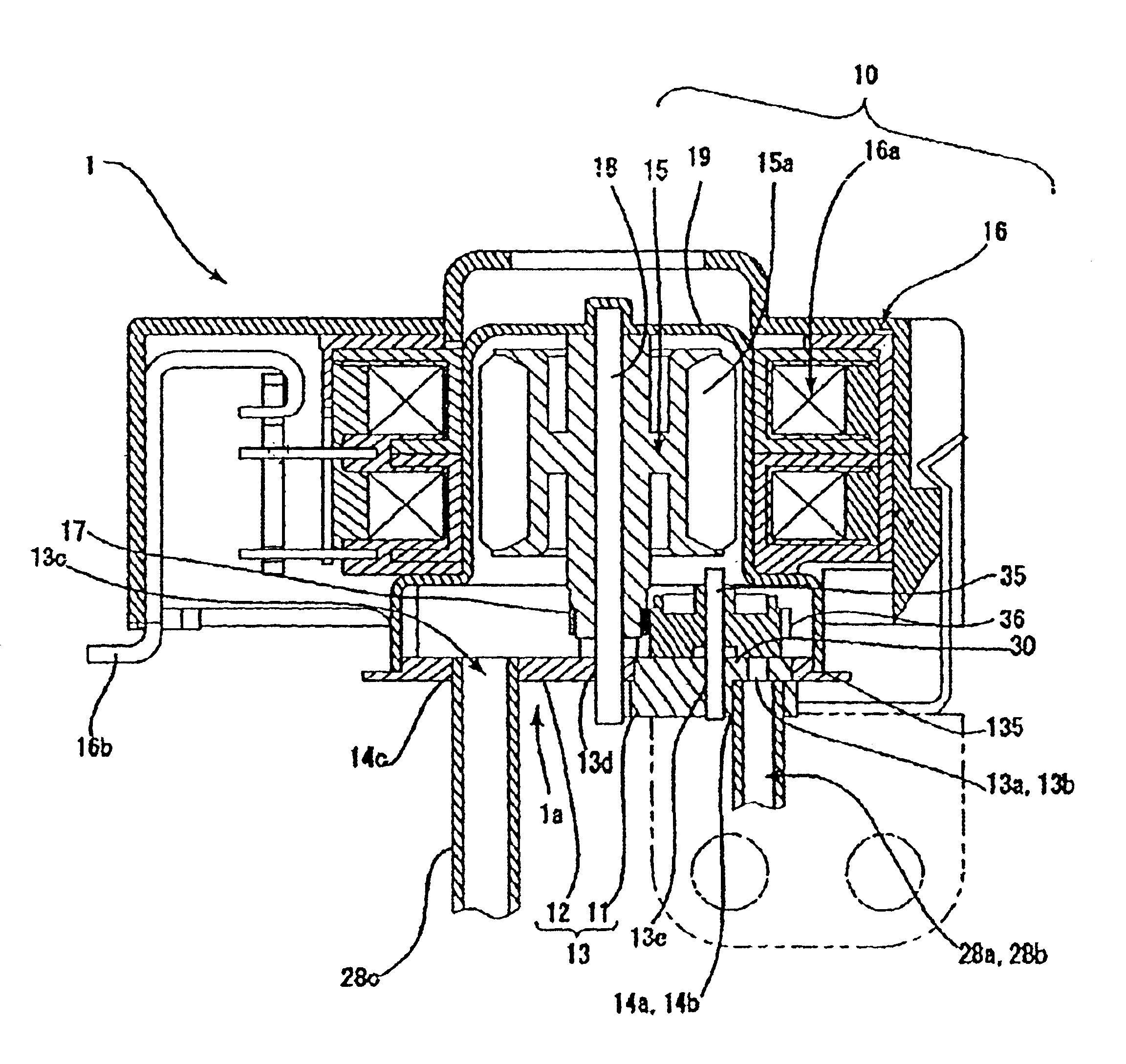Valve device
a valve and valve seat technology, applied in the direction of valve release devices, valve operating means/release devices, mechanical equipment, etc., can solve the problems of increase the cost of valve seat plates, and difficult to obtain precise dimensions and positions of holes, etc., to achieve excellent planarity and prevent the effect of changing the planarity
- Summary
- Abstract
- Description
- Claims
- Application Information
AI Technical Summary
Benefits of technology
Problems solved by technology
Method used
Image
Examples
Embodiment Construction
[0024]FIG. 1 is a vertical cross-sectional view of a refrigerant distribution device of a refrigerator, to which the present invention is applied. FIGS. 2(A), (B), and (C) are respectively a plan view, a vertical cross-sectional view, and a bottom view of a valve seat plate of a valve device which is used in the refrigerant distribution device illustrated in FIG. 1. FIG. 2(B) is a cross-section of the valve seat plate along the A-A′ line of FIGS. 2(A) and (C). FIGS. 3(A) through (F) are respectively diagrams for the modes of the refrigerant distribution device illustrated in FIG. 1.
[0025]In FIG. 1, a refrigerant distribution device 1 of this embodiment has a valve device 1a equipped with a valve seat plate 13 and a sealing case 19 which covers the front side of the valve seat plate.
[0026]In the valve device 1a, a stepping motor 10 is configured inside and outside of the sealing case 19 as a valve drive device to drive a valve element. In the stepping motor 10, a rotor 15 is position...
PUM
 Login to View More
Login to View More Abstract
Description
Claims
Application Information
 Login to View More
Login to View More - R&D
- Intellectual Property
- Life Sciences
- Materials
- Tech Scout
- Unparalleled Data Quality
- Higher Quality Content
- 60% Fewer Hallucinations
Browse by: Latest US Patents, China's latest patents, Technical Efficacy Thesaurus, Application Domain, Technology Topic, Popular Technical Reports.
© 2025 PatSnap. All rights reserved.Legal|Privacy policy|Modern Slavery Act Transparency Statement|Sitemap|About US| Contact US: help@patsnap.com



